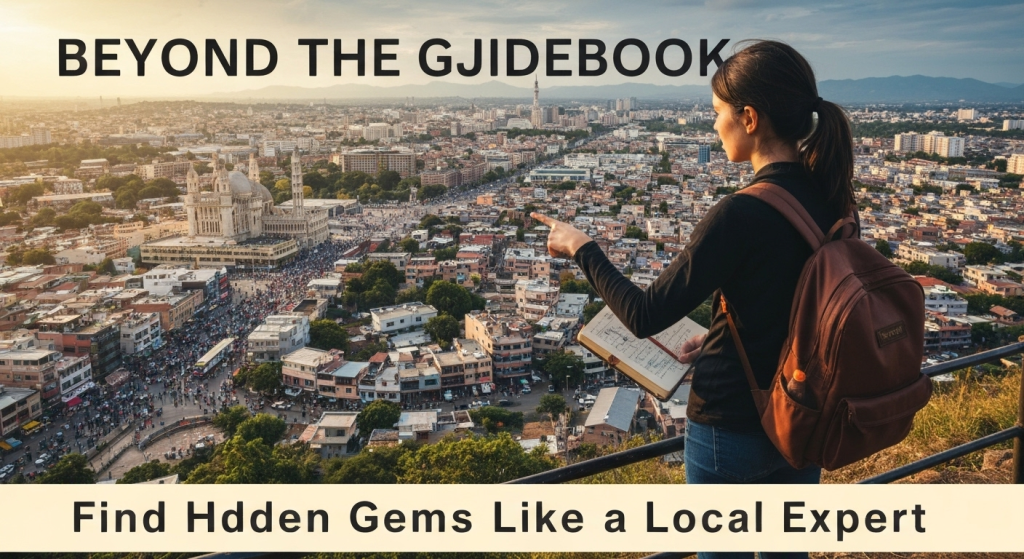Finding authentic local experiences while traveling has become my obsession over the past five years as a professional travel researcher and cultural explorer. My name is Mahnoor Farooq, and I’ve spent countless hours wandering through neighborhoods most tourists never see, building relationships with locals, and discovering places that don’t make it into mainstream travel guides.
Most travelers stick to the same tired tourist traps because they don’t know how to dig deeper. They miss the real heart of a city – those magical spots where locals actually spend their time. Here’s the thing: the best experiences aren’t hidden because they’re secret. They’re hidden because most people don’t know how to look for them.
Understanding What Makes a Place Truly Special
Hidden gems aren’t just about being off the beaten path. They’re about finding places that tell a city’s real story. During my research across different cities, I’ve learned that authentic experiences share certain qualities that set them apart from tourist destinations.
Local gathering spots have a different energy than tourist attractions. You’ll notice locals chatting with staff, people meeting friends there regularly, and a comfortable atmosphere where nobody feels rushed to leave. These places serve their community first, not visitors.
The best hidden gems also connect to local culture in meaningful ways. They might showcase traditional crafts, serve family recipes passed down through generations, or occupy buildings with fascinating histories. What makes them special isn’t their Instagram potential – it’s their genuine connection to the place and people.
Key Characteristics of Authentic Hidden Gems:
FeatureTourist TrapHidden GemCustomer BaseMostly visitorsPrimarily localsPricingInflated for touristsFair local pricingAtmosphereRushed, commercialRelaxed, welcomingCultural ConnectionSurface-level themesDeep local rootsStaff InteractionTransactionalPersonal, friendly
My Personal Discovery Methods That Actually Work
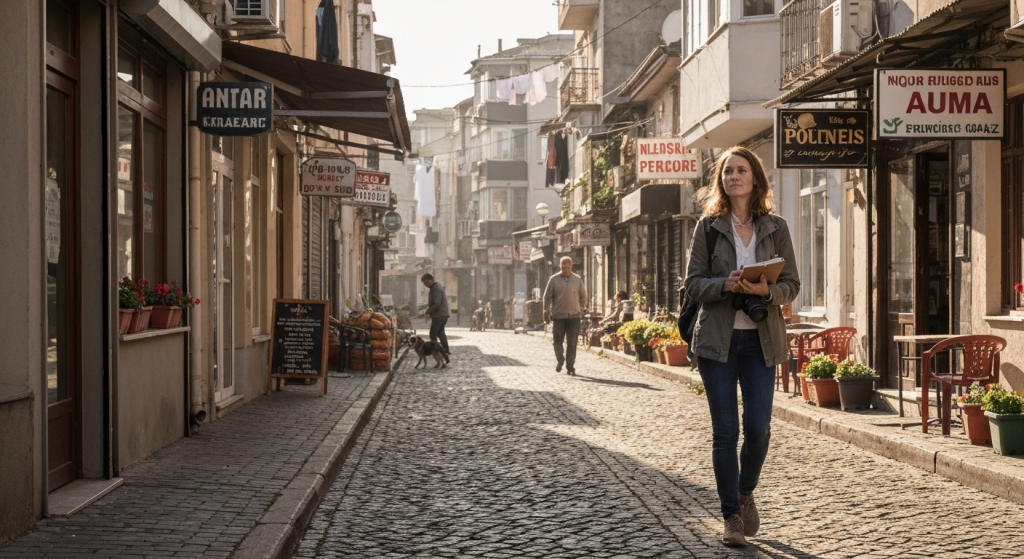
After years of trial and error, I’ve developed specific strategies that consistently lead me to amazing local experiences. These methods have never failed me, whether I’m exploring bustling metropolises or quiet neighborhoods.
The 20-Minute Walk Rule
I always walk at least 20 minutes away from any major tourist attraction before I start seriously looking for local spots. This simple rule eliminates most tourist-oriented businesses and gets you into areas where locals actually live and work.
The magic happens in those transitional zones between tourist districts and residential areas. That’s where you’ll find the coffee shops where neighborhood regulars read their morning papers, the small restaurants that have been family-owned for decades, and the shops that cater to daily local needs rather than souvenir hunters.
Following Local Foot Traffic
One of my most reliable techniques involves observing where locals actually go. I spend time in public spaces – parks, transit stations, market areas – and watch the flow of people who clearly aren’t tourists. Locals move differently. They walk with purpose, they know exactly where they’re going, and they often carry everyday items like groceries or work bags.
Following these natural pathways has led me to incredible discoveries. Local foot traffic reveals the real arteries of a city – the routes people take to their favorite lunch spots, the shortcuts to beloved neighborhood hangouts, and the gathering places that serve as community hubs.
Effective Observation Points:
- Bus stops and transit stations
- Neighborhood markets and grocery stores
- Parks and public squares
- School pickup areas
- Local government buildings
The Two-Local Rule
Before I commit time to any place, I make sure I see at least two locals who appear to be regulars. This means people who clearly know the staff, have their usual orders, or show other signs of being repeat customers. This simple filter has saved me countless hours and led me to consistently authentic experiences.
Regular customers create a different atmosphere. They chat with staff, recommend items to each other, and treat the space like a community gathering place rather than just a business transaction. Their presence indicates that a place has earned local loyalty over time.
Building Genuine Connections with Locals
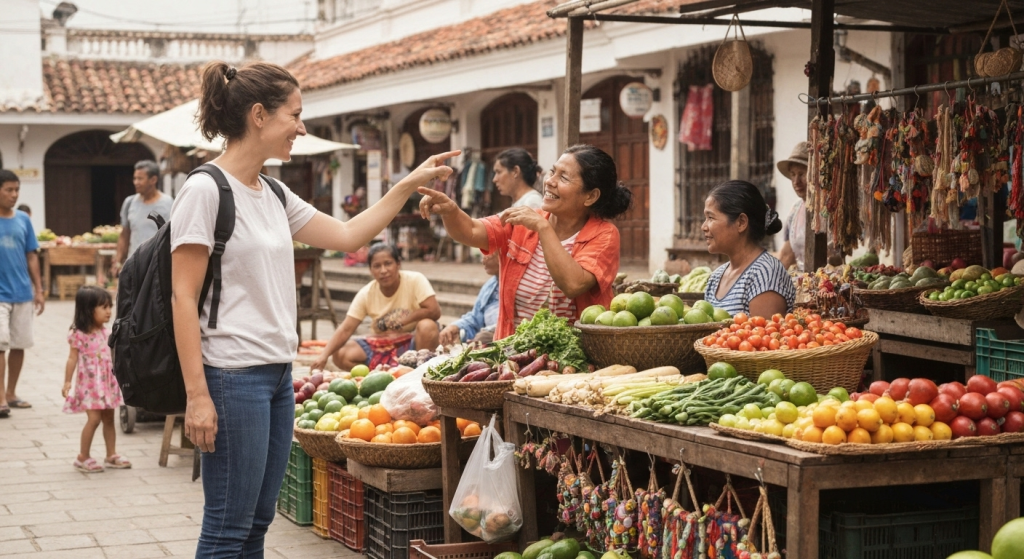
The fastest way to discover hidden gems is through local recommendations, but getting genuine suggestions requires building real connections. Most locals are happy to share their favorite spots, but only if they sense you’re genuinely interested in their city and culture.
Starting Conversations That Lead Somewhere
I’ve found that asking about daily routines works much better than asking about tourist attractions. Instead of “What should I see here?” I ask questions like “Where do you go for coffee in the morning?” or “What’s your favorite spot to relax after work?” These questions invite people to share personal preferences rather than give standard tourist advice.
The key is showing genuine curiosity about how locals live their daily lives. People love talking about their routines, their neighborhood, and places that make them feel at home. This approach has led to some of my most memorable discoveries and lasting friendships.
The Art of Follow-Up Questions
When someone recommends a place, I always ask follow-up questions that show I’m really listening. “What makes it special to you?” “How long have you been going there?” “What should I try when I visit?” These questions often reveal additional details that help me understand why the place matters to locals.
Follow-up questions also demonstrate respect for local knowledge and often lead to additional recommendations. People appreciate when visitors take their suggestions seriously and want to understand the deeper reasons behind their preferences.
Timing Your Exploration for Maximum Discovery
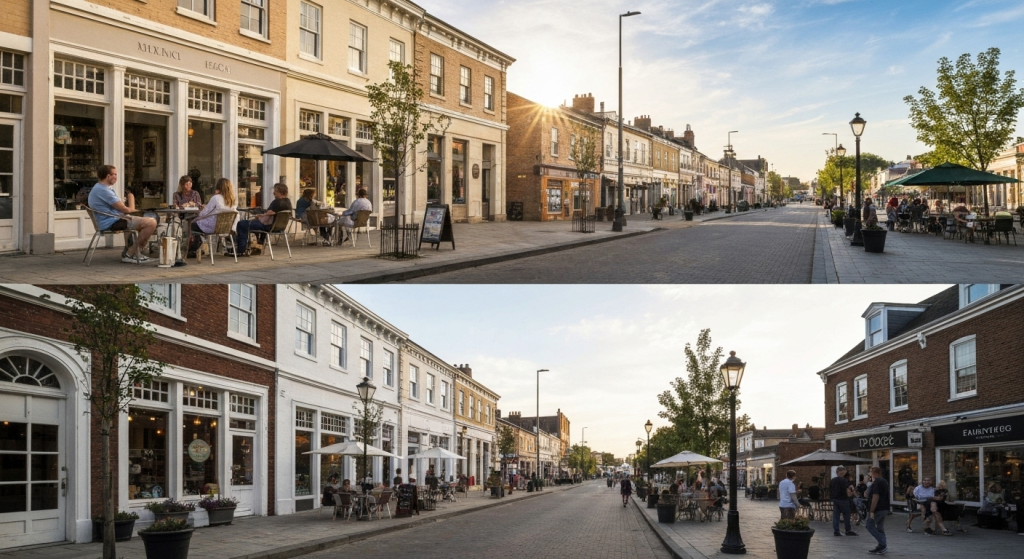
When you explore matters just as much as where you look. Different times reveal different aspects of local life, and understanding these rhythms helps you find the most authentic experiences.
The Magic of Off-Peak Hours
Some of my best discoveries happen during off-peak hours when tourists are elsewhere but locals are going about their regular routines. Mid-morning on weekdays, early afternoons, and late evenings often reveal a completely different side of neighborhoods.
During these quieter times, local business owners have more time to chat, regular customers are more relaxed, and the atmosphere feels more genuine. You’ll also notice details that get lost during busy periods – the way morning sunlight hits a café’s windows, how neighbors greet each other on the street, or the peaceful energy of a neighborhood park.
Optimal Exploration Times:
Time PeriodBest ForWhat You'll Find7-9 AMLocal breakfast spotsMorning routines, commuter cafés2-4 PMNeighborhood explorationQuiet shops, local services5-7 PMCommunity gatheringAfter-work spots, social hubs8-10 PMEvening cultureLocal nightlife, dinner traditions
Seasonal Considerations
Local life changes with the seasons, and hidden gems often have different personalities throughout the year. The outdoor market that’s bustling in summer might move indoors during winter. The rooftop bar that locals love in warm weather might have a completely different winter setup that’s equally charming.
I always ask locals about seasonal changes when I discover a place I love. “Is this place different in winter?” “Where do people go when it’s raining?” These questions help me understand the full rhythm of local life and often lead to discovering seasonal hidden gems.
Neighborhood-Specific Research Techniques
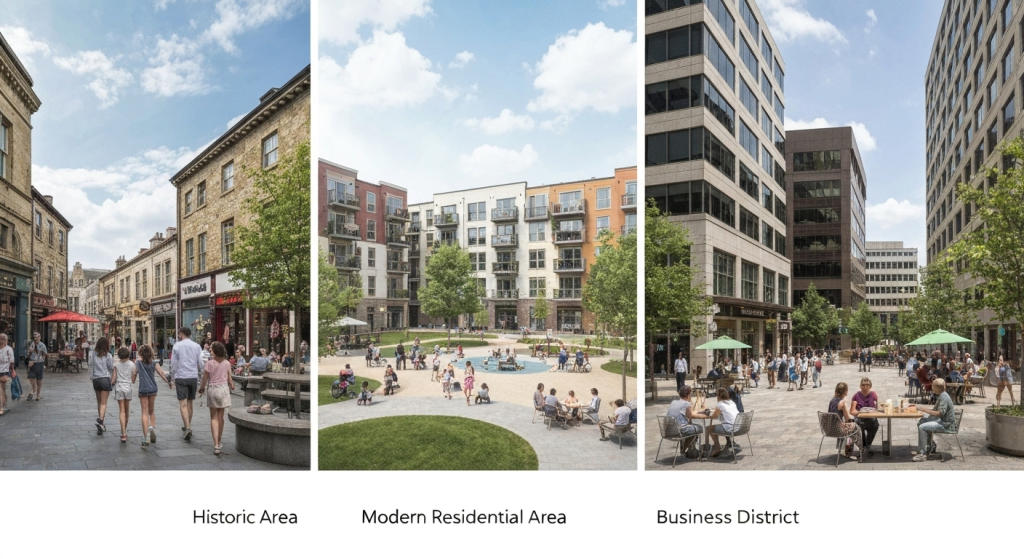
Different types of neighborhoods require different discovery approaches. What works in historic districts might not work in modern residential areas, and business districts have their own hidden treasures that require specific strategies to find.
Historic Neighborhoods
Historic areas often have the most layers of hidden gems because they’ve had time to develop complex local ecosystems. Look for businesses that have clearly been around for decades, family-owned shops with handmade signs, and places that occupy interesting old buildings.
In these neighborhoods, I pay special attention to architectural details that suggest long-term local use. Worn stone steps, vintage signage, and buildings that have been adapted over time often house the most authentic local experiences.
Residential Areas
Residential neighborhoods require a gentler approach since you’re entering people’s daily living spaces. The gems here tend to be service-oriented – the local laundromat with the best coffee, the corner store that’s also a community bulletin board, or the small restaurant that’s basically someone’s extended living room.
These areas reward patience and respectful observation. The best discoveries often happen when you’re simply walking through residential streets and notice where locals naturally congregate or where small businesses have integrated seamlessly into neighborhood life.
Business Districts
Business districts have their own rhythm of hidden gems that cater to local workers. The lunch counter that serves amazing food to office employees, the bookstore where people browse during breaks, or the small bar where colleagues meet after work.
Timing is crucial in business districts. The places that serve locals are often only busy during specific hours – breakfast spots that close at 10 AM, lunch places that are packed from 12-2 PM, or happy hour spots that come alive at 5 PM.
Digital Tools That Actually Help Local Discovery
While I believe in offline exploration, certain digital tools can enhance your ability to find authentic local experiences. The key is using technology to support genuine discovery rather than replace it.
Social Media Strategy
Local hashtags and geotags can reveal places that locals post about but that don’t appear in tourist guides. I look for posts with local language, everyday situations, and people who clearly live in the area rather than visitors passing through.
The most valuable social media content comes from people posting about their regular routines – their morning coffee spot, their weekend lunch place, or their evening walk route. These posts often include location information and context that helps you understand why locals love these places.
Review Platform Insights
I use review platforms differently than most travelers. Instead of looking for the highest-rated places, I search for reviews written by people who clearly live locally. These reviews mention different details – how a place fits into their routine, seasonal changes, or comparisons to other local options.
Local reviewers also tend to mention practical details that tourists miss – the best times to visit, how to order, or unwritten rules about the place. This insider information helps you integrate more naturally when you visit.
Effective Review Analysis:
Review TypeIndicatorsValueTourist ReviewMentions hotel, vacation, comparison to homeLimited local insightLocal ReviewMentions routine, seasons, neighborhood changesHigh authenticity valueRegular CustomerSpecific menu knowledge, staff relationshipsMaximum insider information
Common Mistakes That Lead to Tourist Traps
Even experienced travelers make predictable mistakes that keep them stuck in tourist-oriented experiences. Understanding these pitfalls helps you avoid them and stay focused on authentic discovery.
Following Crowds Without Context
Just because a place is busy doesn’t mean it’s good or authentic. Tourist attractions create their own crowds that have nothing to do with local quality or cultural significance. I’ve learned to distinguish between tourist crowds and local popularity.
Tourist crowds move differently – they take lots of photos, spend less time in each location, and often seem rushed or overwhelmed. Local crowds are more relaxed, spend longer periods in places, and interact more naturally with staff and each other.
Relying Too Heavily on “Best Of” Lists
Online “best of” lists usually feature the same places because they’re based on visibility rather than authentic local experience. These lists often miss the smaller, family-owned places that locals prefer because those businesses don’t have the marketing budgets or online presence to compete with tourist-oriented establishments.
The places that consistently appear on multiple “best of” lists are usually either tourist traps or establishments that have shifted their focus from serving locals to attracting visitors. True hidden gems rarely appear on these lists because they don’t need to – they already have loyal local customer bases.
Creating Your Own Discovery System
Developing a personal system for finding hidden gems makes your exploration more efficient and increases your chances of meaningful discoveries. My system has evolved over years of travel, but the core principles remain consistent.
Pre-Arrival Research
Before I visit any city, I spend time learning about local neighborhoods, understanding the basic geography, and identifying areas that seem to have strong local communities. This background research helps me use my time more effectively once I arrive.
I also research local customs, eating times, and social patterns. Understanding when locals eat lunch, how they socialize, and what activities are popular helps me time my exploration for maximum discovery potential.
Daily Exploration Routine
I structure my days to balance planned exploration with spontaneous discovery. Usually, I’ll identify one neighborhood to focus on each day, but I leave plenty of time for following interesting leads or lingering in places that feel special.
My daily routine typically includes one meal at a place locals recommended, at least two hours of unstructured walking, and time spent in a local gathering place like a park or market where I can observe natural social patterns.
Documentation and Follow-Up
I keep detailed notes about every place I discover, including not just what I experienced but why locals love it and how it fits into neighborhood life. This documentation helps me understand patterns and improve my discovery methods over time.
I also make an effort to follow up with locals who gave me recommendations. Sharing my experiences and thanking them for suggestions often leads to additional recommendations and deeper connections that enhance future visits.
Frequently Asked Questions
How do you know if a local recommendation is genuine? Genuine recommendations come with specific details about why the person loves the place, when they go there, and what makes it special to them. Fake or generic recommendations tend to be vague and don’t include personal context.
What if I don’t speak the local language well? Non-verbal communication works remarkably well for discovering local spots. Friendly curiosity, respectful observation, and simple gestures often lead to meaningful interactions even without shared language.
How long should I spend in each neighborhood? I typically spend at least half a day in any neighborhood I want to understand. This allows time for multiple interactions, observing daily rhythms, and following up on initial discoveries.
Are hidden gems always better than popular tourist attractions? Not always. Some tourist attractions genuinely deserve their reputation. The goal isn’t to avoid all popular places but to balance famous sites with authentic local experiences that give you a fuller understanding of the city.
The Long-Term Value of Authentic Discovery
Finding hidden gems isn’t just about having unique travel experiences – it’s about developing a deeper understanding of places and people. The skills you develop and the connections you make through authentic exploration create lasting value that extends far beyond any single trip.
The relationships I’ve built with local business owners, the neighborhoods I’ve come to understand intimately, and the discovery skills I’ve developed have enriched not just my travels but my entire approach to exploring and understanding new places.
When you take time to find a city’s true hidden gems, you’re not just finding great restaurants or interesting shops. You’re learning how communities function, how cultures express themselves in daily life, and how to connect with people across different backgrounds and experiences.
This approach to travel discovery requires patience, genuine curiosity, and respect for local communities. But the rewards – authentic experiences, meaningful connections, and deep cultural understanding – make it the most valuable investment you can make in your travel experiences.

